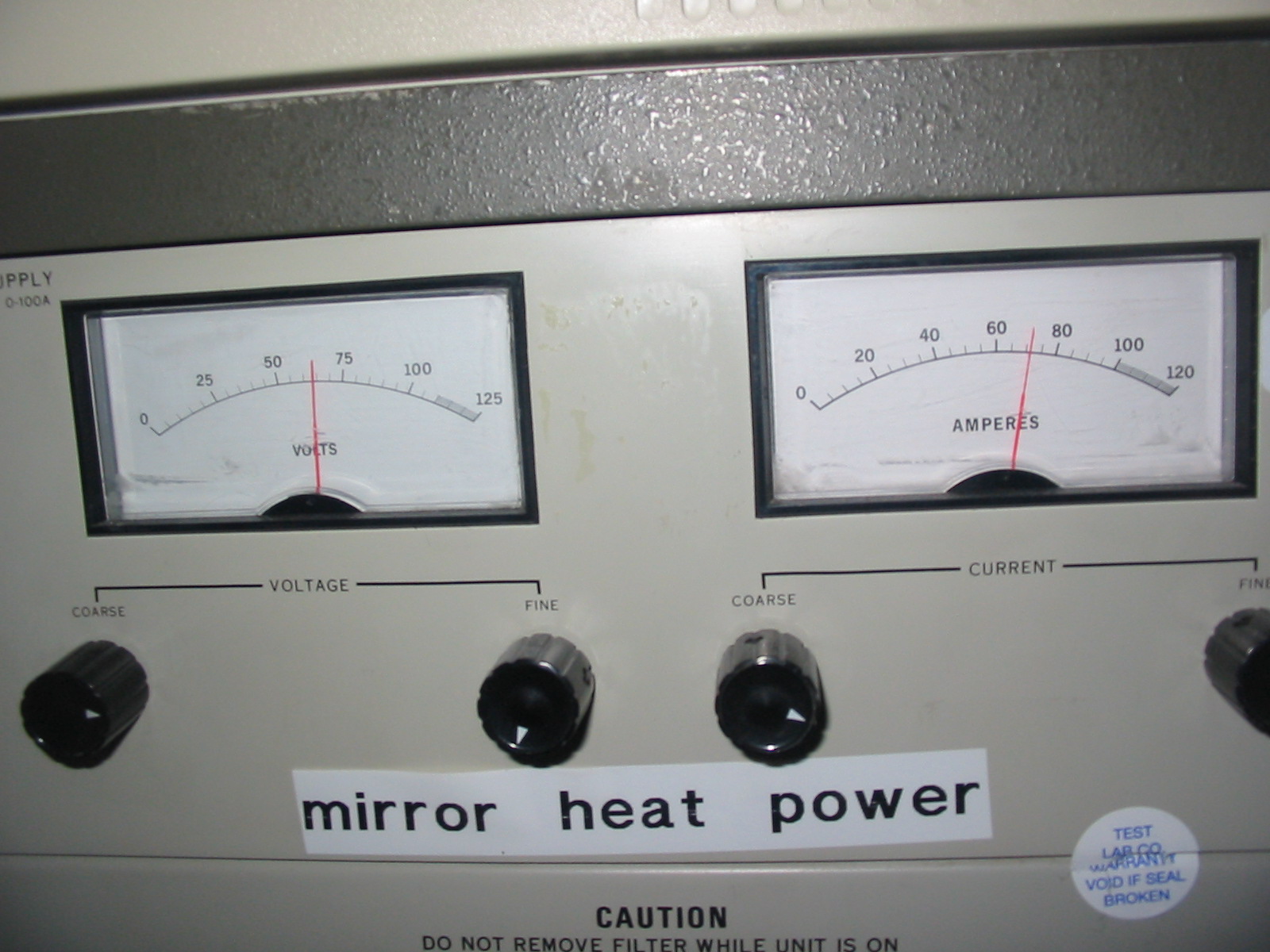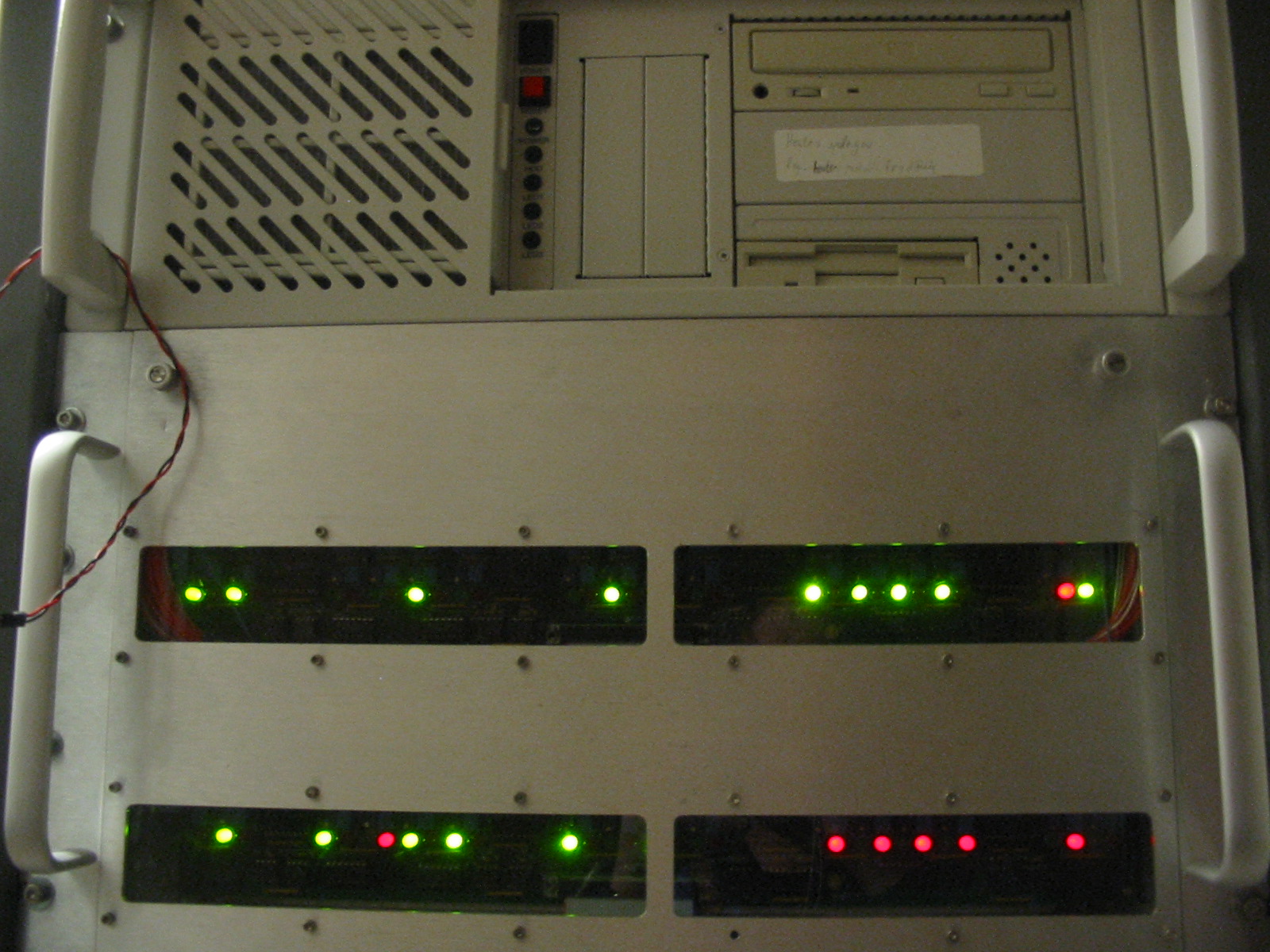Note that in the photo below
you can see that the mirror heater system power supply has
an adjustable current limit (two knobs - "fine" and "coarse").
Mark Thoma says that Giles' suggestion of reducing the current
limit to 40-50 Amps is not unreasonable. There are 8 channels
drawing 10-12 Amps or less per channel, so that explains why the
"full heat on" level is at 70-80 Amps.
Fig. 1
Paolo writes: "The cable
is an AWG 4, with two conductors for each polarity."
However, as Mark explains, there is only *one* conductor
for each polarity.
Fig.
Paolo writes: "I esteemed [estimate] about
105-110 F
(40-45 C) in this
conditions. However, as you can see the cable is safe till 194 F (90
C)." According to Mark, the cable should be safe to 200 C.
He thinks that perhaps the "90C" that is printed on the cable
does not refer to temperature, but is some other sort of
specification.
Paolo writes: "It is puzzling why the cyan
and white cables,
probably awg 14-16 or close (I can't really tell), visible in next
pictures are not overheat much worst." Mark explains that these
are awg 12 wires, rated for about 25 Amps, and that each wire carries
the current for only 1-2 channels. Because the maximum current per
channel is 10-12 Amps, these wires never carry more current than they
are rated for. That is why they do not overheat. Mark thinks that
the reason that the AWG 4 cable *does* get hot is because of a bad
connection, as explained above.


